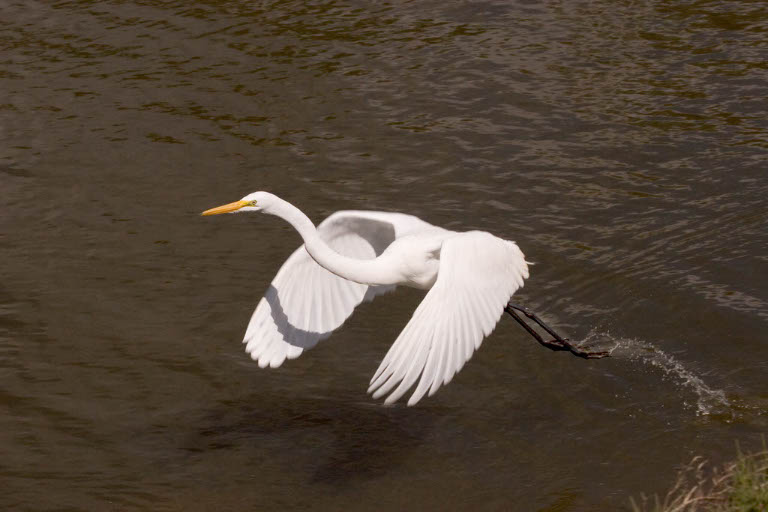I enjoy my garden and carefully cultivate different flowers and vegetables in it. I mourn the loss of a plant to frost bite or heat dehydration. I tell myself I will try to do a better job next year caring for them.
A wildflower does not get such tender loving care. It learns to find the most conducive environment to grow in, and last as long as possible. Its life span depends on the weather conditions - if it is too hot or there has not been too much rain, not many wildflowers will grow. We are once again reminded of the laws of nature and survival of the fittest. As I watch the breathtaking view of a bed of flowers in Carrizo Plains, a dramatic display seen after five years, I feel grateful that good rainfall this year made it possible.
Carrizo Plains is a protected area with the highest concentration of threatened and endangered wildlife in California. Driving through it this year in the spring season, there were flowers as far as the eye could see. The palette of nature's colors looked almost unnatural. Goldfields, Owl's clover, and Lupine were prolific. What was fascinating was that these flowers were found in different parts of the preserve within a twenty mile radius, each finding its ideal ecology.
On my return to the Bay Area, I photographed the flowers at Alum Rock Park and found 22 varieties in a span of 3 miles. Most of the flowers were different from those seen at Carrizo Plains. It once again told us the story that each type of flower survived in a specific ecology and how fragile its existence can be.
Sunday, April 25, 2010
Thursday, April 8, 2010
Morocco - Mountains and Oasis
"We will drive to the top of the Atlas mountains and then see the expanse of the Sahara stretched below us". That is how my husband had imagined it would be, having heard a lot about the varied scenery in Morocco. Well, we did have a truly breathtaking drive up the Atlas mountains. However we did not see the desert from the top, but oasis-like scenery. Of course that would make sense geologically, as the Atlas mountains act as a barrier between the Atlantic and Mediterranean coastlines, and the Sahara desert.
The drive from Marrakesh to Ouarzazate through the Atlas mountains was one of the most scenic drives of Morocco. Along the way we saw sheep dogs, cattle, and charming villages decorating the mountainside.We drove right to the top of the 1600m-high pass at Tizi n'Tinififft and got the most spectacular view. It was worth braving the cold winds of a December morning. From this point we could see the oasis region of Draa Valley in the distance. On the way down to Ouarzazate, one of most famous Kasbahs of Morocco, Ait Benhaddou gave us a rich tapestry of history. Kasbahs or fortresses, were built as protection from invaders from the south.
Ouarzazate to Draa Valley gave a rare, untouched view of the oasis landscape with palm trees and cactus. At Draa Valley we were welcomed by school children who were very curious to know more about us, even though we did not have a common language. Dates, fruits and vegetables could be seen in the farms. The doors of the homes were artistically decorated made to welcome visitors.
As our Moroccan driver proudly told us, every village has a school and a mosque. We learned to look for these distinctive signs as we drove through different parts of the Moroccan countryside.
Our drive to Dades Valley, another oasis area, took us along the route of a thousand Kasbahs. A young woman gave us an intimate description of the Kasbah Ameridihl. Though she told us she spoke only a little English, the language that was second nature to her was that of the internet. She promised to stay in touch with Hotmail and MSN. One again we were reminded of how flat the world was, and how easily boundaries could be crossed with today's technologies!
The drive from Marrakesh to Ouarzazate through the Atlas mountains was one of the most scenic drives of Morocco. Along the way we saw sheep dogs, cattle, and charming villages decorating the mountainside.We drove right to the top of the 1600m-high pass at Tizi n'Tinififft and got the most spectacular view. It was worth braving the cold winds of a December morning. From this point we could see the oasis region of Draa Valley in the distance. On the way down to Ouarzazate, one of most famous Kasbahs of Morocco, Ait Benhaddou gave us a rich tapestry of history. Kasbahs or fortresses, were built as protection from invaders from the south.
Ouarzazate to Draa Valley gave a rare, untouched view of the oasis landscape with palm trees and cactus. At Draa Valley we were welcomed by school children who were very curious to know more about us, even though we did not have a common language. Dates, fruits and vegetables could be seen in the farms. The doors of the homes were artistically decorated made to welcome visitors.
As our Moroccan driver proudly told us, every village has a school and a mosque. We learned to look for these distinctive signs as we drove through different parts of the Moroccan countryside.
Our drive to Dades Valley, another oasis area, took us along the route of a thousand Kasbahs. A young woman gave us an intimate description of the Kasbah Ameridihl. Though she told us she spoke only a little English, the language that was second nature to her was that of the internet. She promised to stay in touch with Hotmail and MSN. One again we were reminded of how flat the world was, and how easily boundaries could be crossed with today's technologies!
Labels:
Atlas Mountains
,
Dades Valley
,
Draa Valley
,
Morocco
,
Tizi n'Tinififft
Subscribe to:
Comments
(
Atom
)
